The Sounds: Delay
Listen to the machines: Click on the picture to play the sound demo.

Binson Echorec 2
Electro-mechanical delay unit (* mid 1960s)
More often than once, particular instruments and effects devices leave an indelible mark on the unmistakable sound of a band – this even goes for the greatest among the great: The trailblazing psychedelic flavour of (particularly) early Pink Floyd would never have been possible (or would at least have sounded considerably different) without Binson’s Echorec.
Binson Echorec 2
Electro-mechanical delay unit (* mid 1960s)
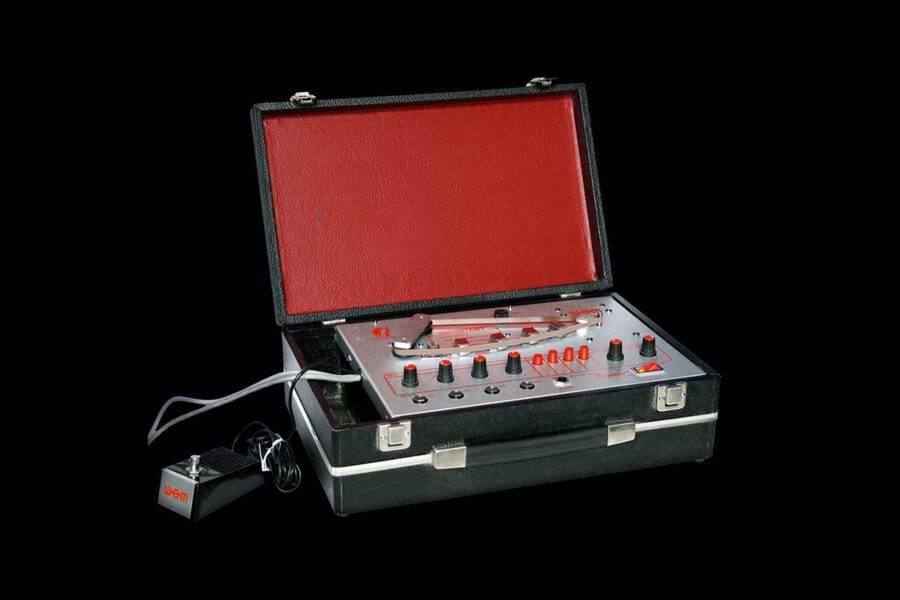
WEM / Watkins Copicat Model IC 300
Tape delay (* approx. 1972)
One of the earliest and most popular tape-based delay units is the WEM Copicat. It was the first mass-procuced tape delay which was to become the commercially most successful of its breed. This is your first post. Edit or delete it, then start writing!
WEM / Watkins Copicat Model IC 300
Tape delay (* approx. 1972)
Lexicon Model Delta-T 102(S)
Modular Digital Delay (*1973)
Once upon a time, Lexicon's Delta-T model range declared the era of digital signal processing open. Fairly soon, this family had some amazingly powerful members, and these devices can be taken to study the evolution of early digital effects – with the focus on their Delta-T 102(S) model.
Lexicon Model Delta-T 102(S)
Modular Digital Delay (*1973)
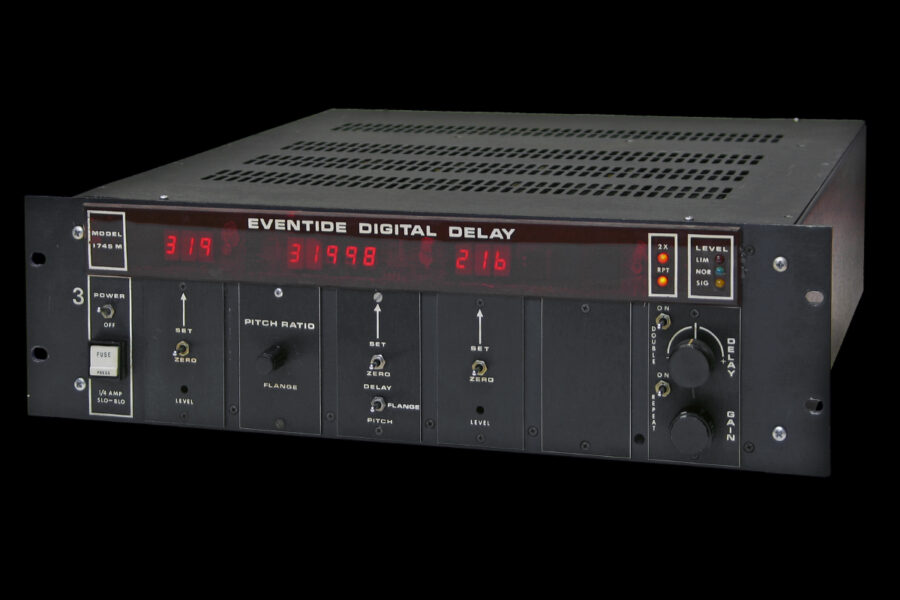
Eventide DDL Model 1745M
Modular Digital Delay (*1975)
We are going back in time, to the Dark Ages of digital signal processing. We are lucky enough to have come across a fossile that is not only a rare find these days, it was also visionary in its heyday – the Eventide 1745 in its various incarnations.
Eventide DDL Model 1745M
Modular Digital Delay (*1975)
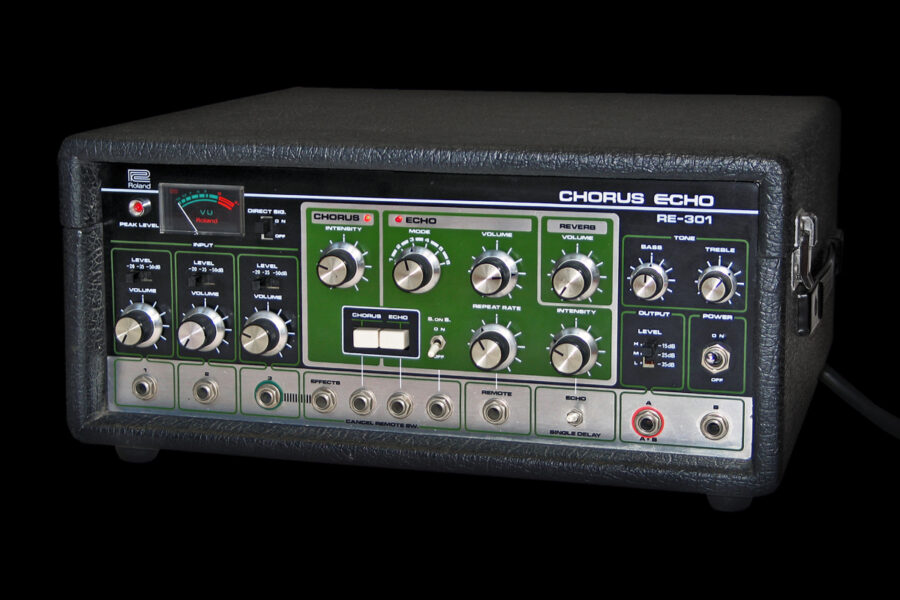
Roland RE-301 Chorus Echo
Tape Delay and Spring Reverb (*1977)
Roland’s line of RE tape delays ranks among the most popular effects devices of all time, and its popularity will probably never dwindle. The RE-201 Space Echo is considered to be the be-all and end-all of all tape delays, its successor – the RE-301 Chorus Echo – has spent most of its lifetime in the second row, however.
Roland RE-301 Chorus Echo
Tape Delay and Spring Reverb (*1977)
Lexicon Model 93 Prime Time
Digital Delay (*1978)
In 1978, Lexicon introduced the original Prime Time Model 93 which spawned an entirely new breed of digital delays. It also went to give their competitors a good run for the money (although competition was admittedly rather small at that time).
Lexicon Model 93 Prime Time
Digital Delay (*1978)
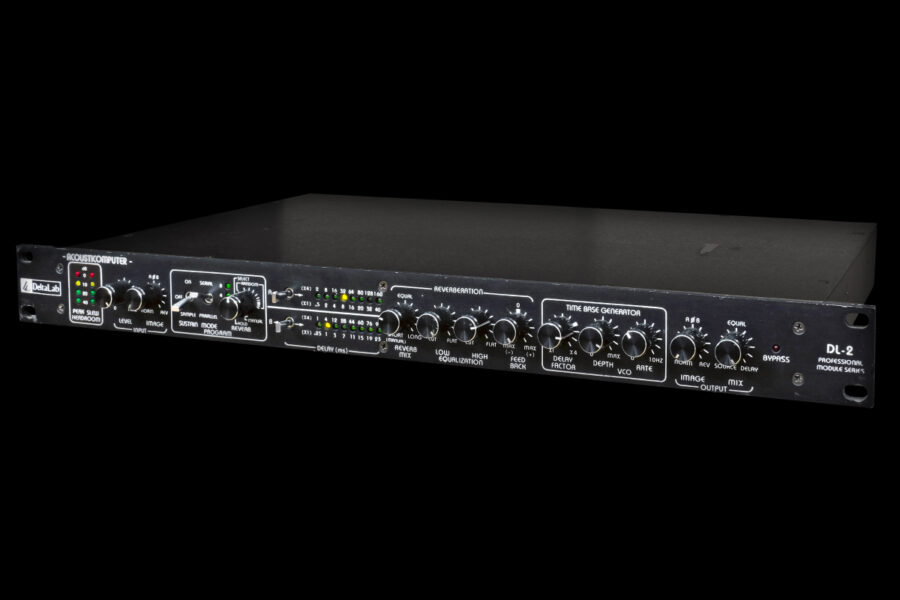
Deltalab DL-2 Acousticomputer
Digital Stereo Multitap Delay (*1978)
Well… one thing can definitely be taken for certain: This contraption has absolutely nothing to do with computers. This fairly flat-footed attempt at cheating the buyer can be neglected as soon as the device has been turned on, though – the DL-2 Acousticomputer is a highly idiosyncratic digital delay with a sound all of its own.
Deltalab DL-2 Acousticomputer
Digital Stereo Multitap Delay (*1978)
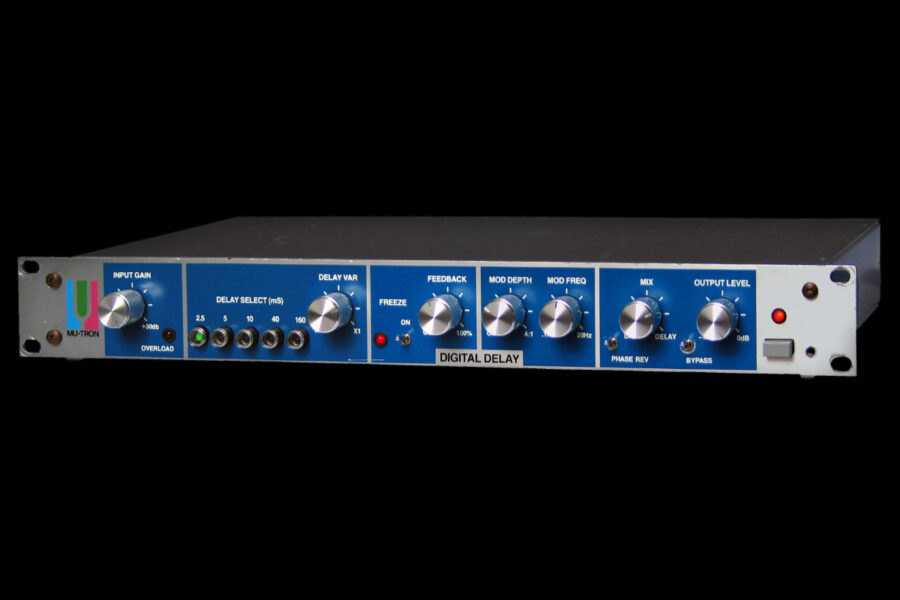
Mu-Tron Digital Delay
Digital Delay (*1979)
Hardly anybody knows about the existence of the Mu-Tron Digital Delay, and – to be picky – all it ever had in common with its famous siblings was the silver-blue livery and the tuning fork logo…
Mu-Tron Digital Delay
Digital Delay (*1979)
Lexicon PCM 42
Digital Delay / Loop Delay (*1981)
If an effects device is still extremely popular with engineers and musicians alike, even after four decades, there must be something about it. If this very device also spawned an entirely new species called “loop delays”, it certainly is worth having a closer look at it. PCM 42, would you please come in?
Lexicon PCM 42
Digital Delay / Loop Delay (*1981)
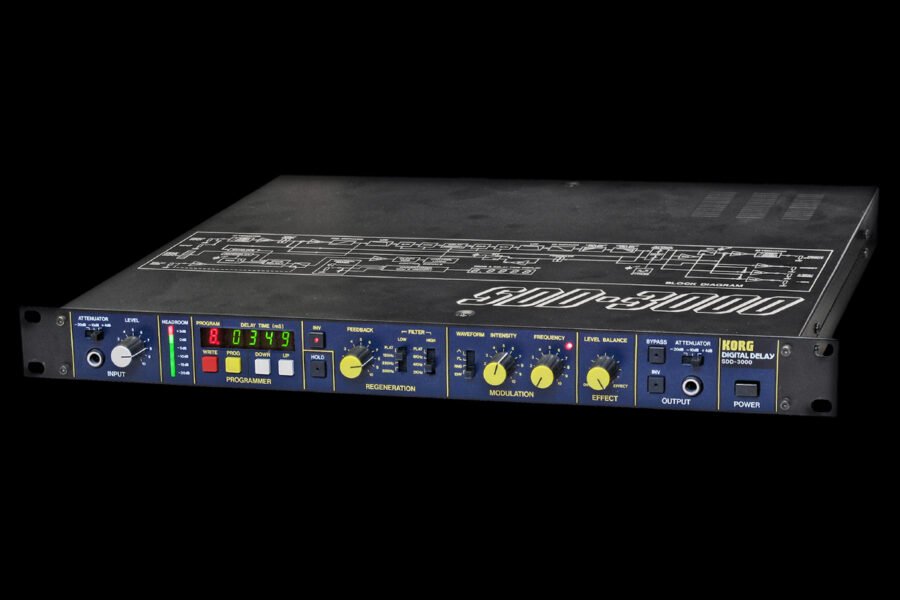
Korg SDD-3000
Digital Delay (*1982)
The SDD-3000 was not only Korg’s first true venture into the world of effects devices, it also has acquired an ever-growing cult following in the years since its release.
Korg SDD-3000
Digital Delay (*1982)
Lexicon Model 95 Prime Time II
Digital Delay (*1982)
Lexicon's successful top-notch luxury delay Prime Time necessitated an updated product eventually – one with improved delay times in particular. The successor to the original Prime Time, the Prime Time II, is sure to have brought a broad grin to the faces of the wealthy happy few who were able to afford one.
Lexicon Model 95 Prime Time II
Digital Delay (*1982)
Lexicon Model 97 Super Prime Time
Programmable Digital Delay (*1983)
Without any doubt, Lexicon's Prime Time family of delay effects counts as some of the most rewarding delay devices on this planet. Starting in 1978 with the fabled Model 93, revised in 1982 as the Model 95, and – drum roll, please – perfected and released as the Super Prime Time Model 97 in 1983.
Lexicon Model 97 Super Prime Time
Programmable Digital Delay (*1983)

Ursa Major MSP-126
Multitap Spatial Processor (*1985)
The MSP-126 is a truly exotic piece of equipment among digital effects processors. Based on a fairly simple concept, it left well-trodden paths behind, and a very idiosyncratic and unique effects processor was born.
Ursa Major MSP-126
Multitap Spatial Processor (*1985)

TC Electronic 2290
Dynamic Digital Delay (*1986)
Some 30 or 35 years ago, the TC 2290 adorned the racks of many major guitar players. Almost in an instant, the 2290 established itself as some kind of standard tool and, for quite some time, it would be the ultimate solution when it came to using digital delays. For TC, it created the foundation their future reputation would be based on.
